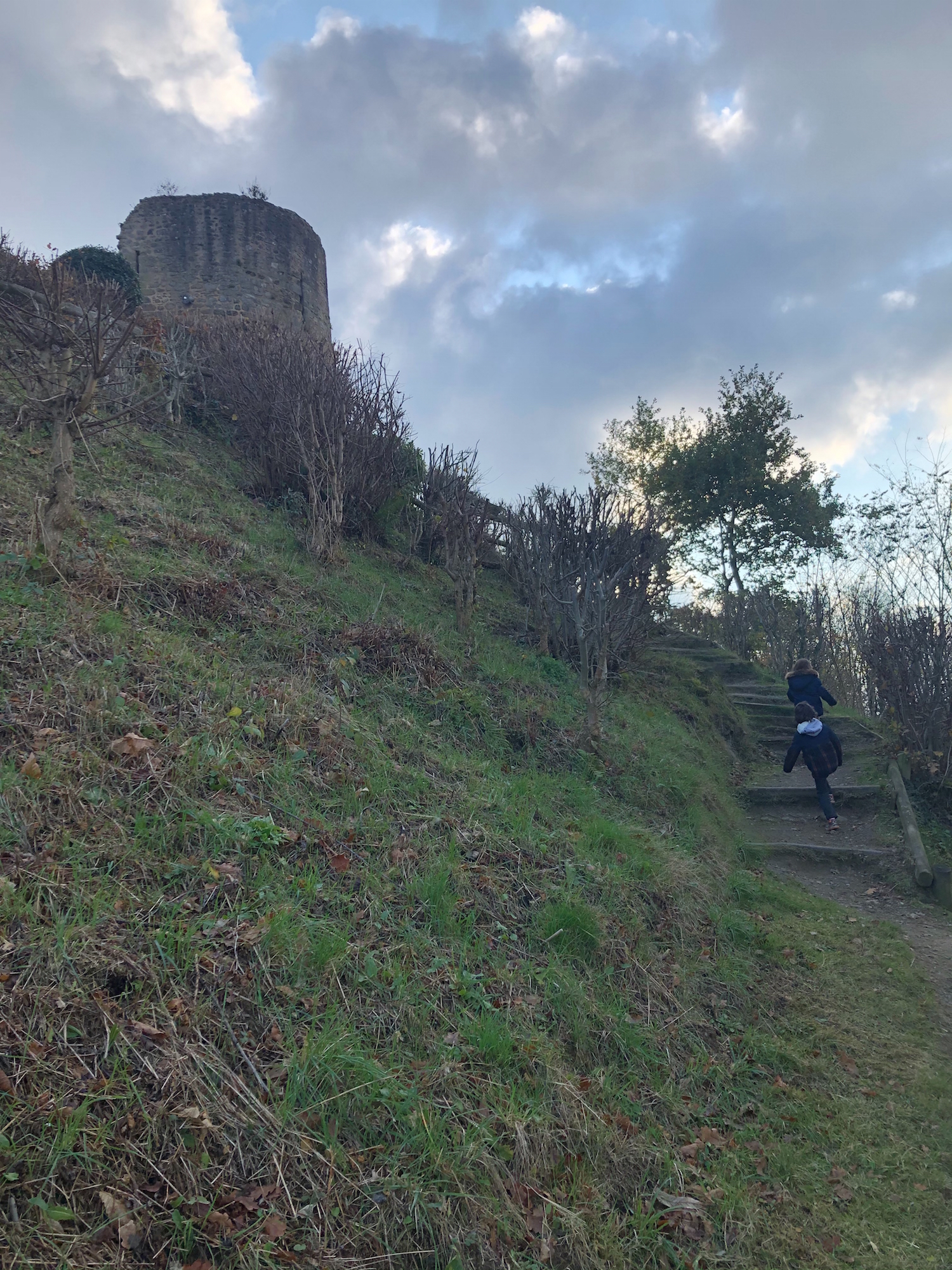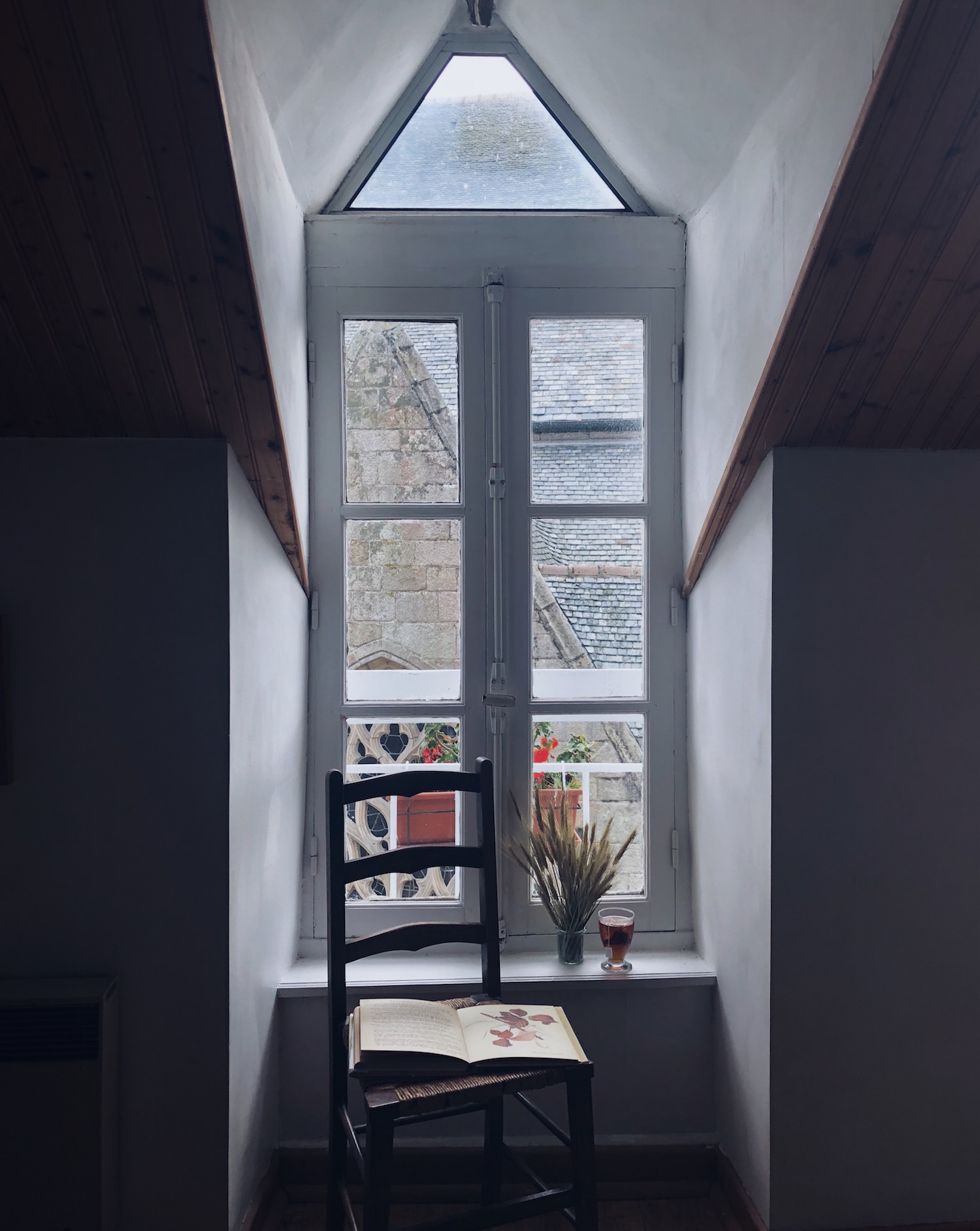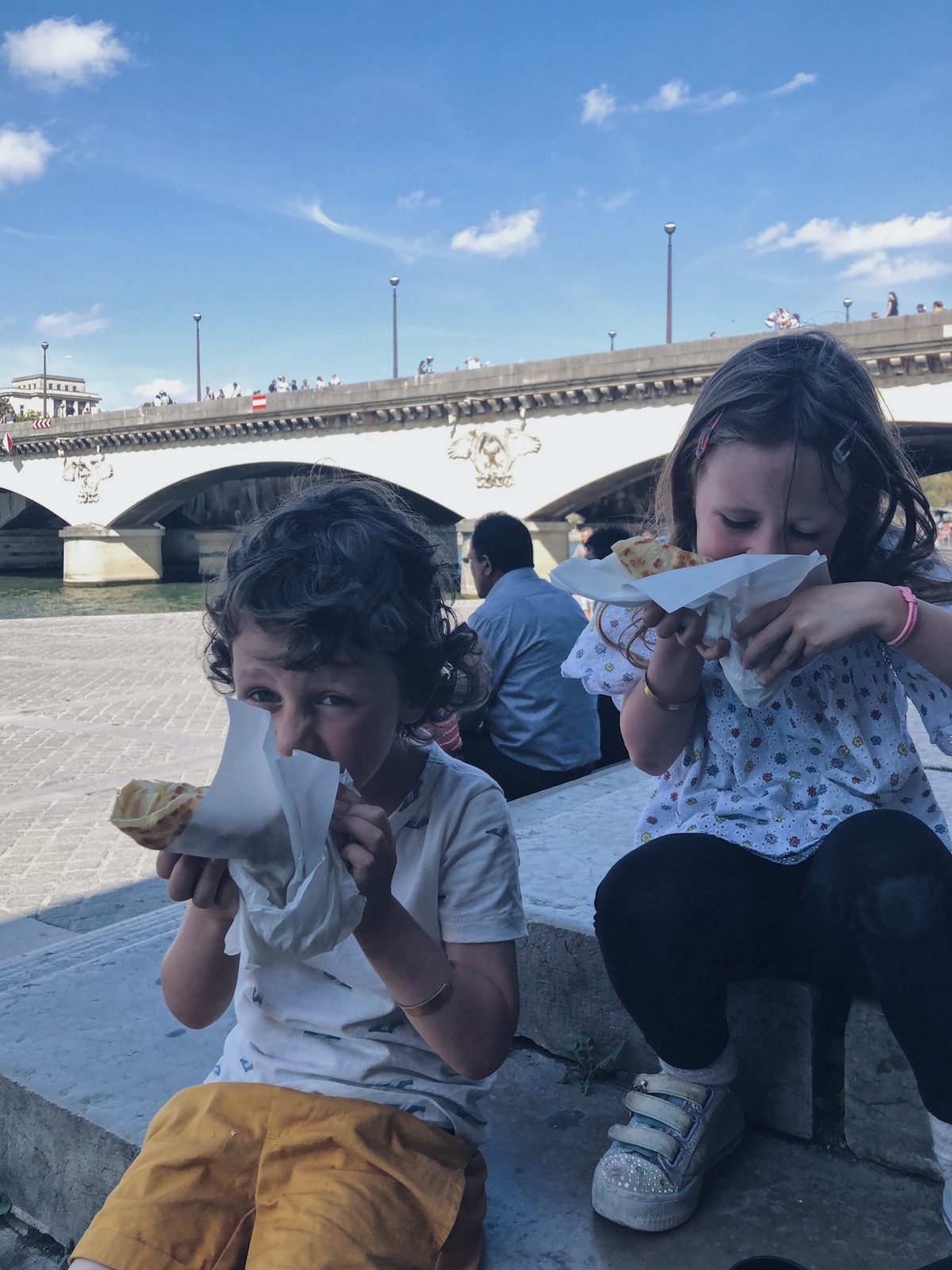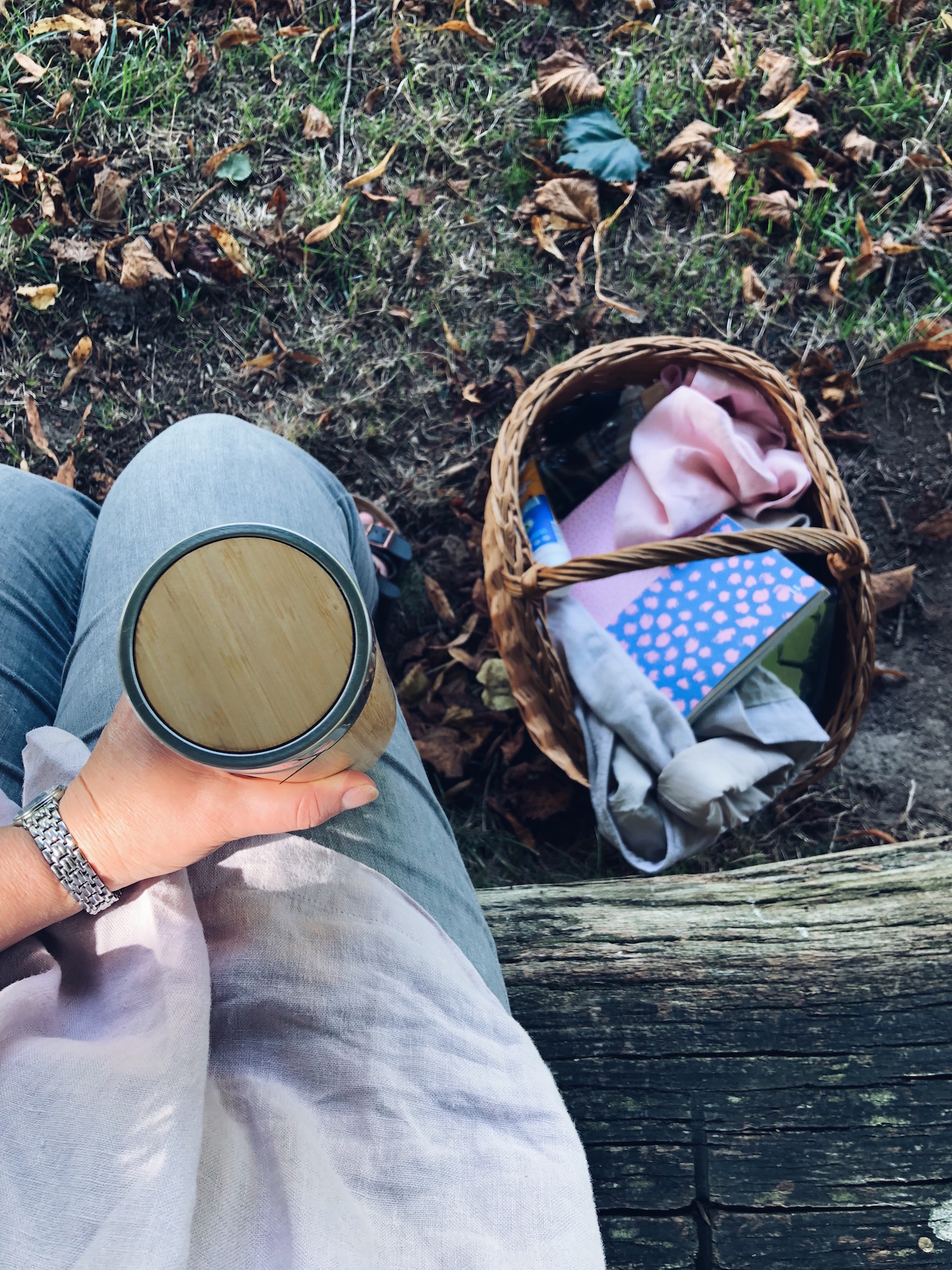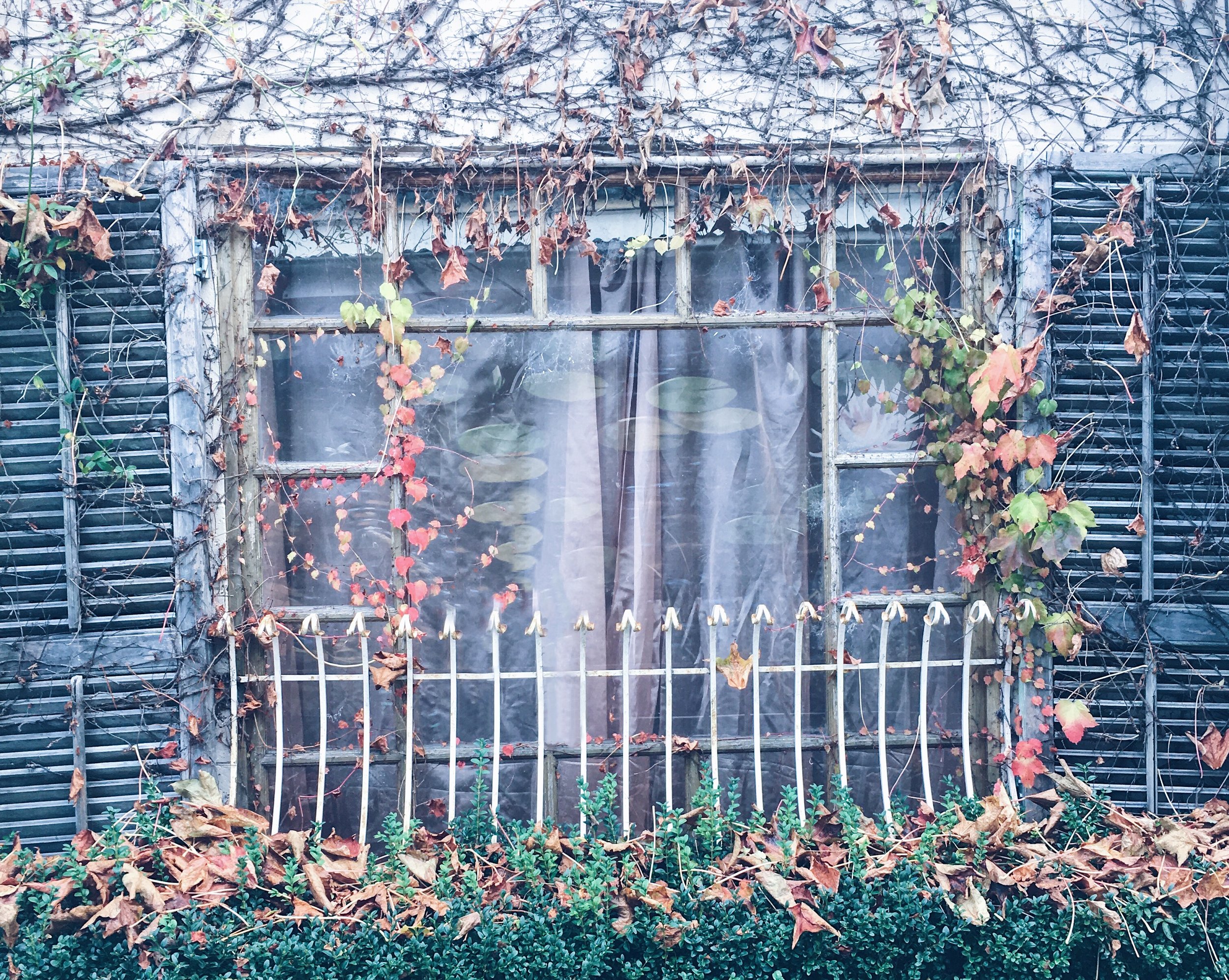
JOURNAL
documenting
&
discovering joyful things
The truth about what happens on our walks
Chevalier Ralph clambered up onto the rocks by the path, to his look-out. “Can you see the advance guard?” the Warrior Queen Scout called up to him, “Are they close yet?”
We all peered through the forest trees and across the canal, to the hiking trail on the other side. Two retirees carrying trekking poles were striding along the path. “I see them!” yelled Chevalier Ralph. “They’re almost ahead of us!”
And then at the same time, both children looked further into the distance, and stiffened. A walking group of about 20 more retirees had rounded the corner of the path across the river, behind their two ‘advance guard’ friends.
“The pack! The pack of oldie chevaliers!” the children yelled, in mock terror. “Run!” And so we ran, a mad race to the old castle ruin, us on one side of the river and our unwitting enemies on the other.
We were two chevaliers and one warrior queen, you see, and we alone knew of a plan by our arch enemies to attack our castle. They intended to sneak up on the castle, cunningly disguised as an innocent-looking walking-party of octogenarians, then storm our walls and take the kingdom.
Luckily, we happened upon them during our walk. Now it was up to us to get to the castle before them, and save the day.
We raced along the forest path, past the ancient abbey with scarcely a glance, and scrambled up the steep hill to our fortress, all the while listening for the sound of deceptively-benign conversations about chestnuts and knitting and grandchildren.
Once there, we pulled up the imaginary draw-bridge, locked the non-existent gates, and armed the crumbling battlements. Hastily (there was no time to lose!), we reached into my backpack and added to our number: the castle was now under the protection of Chevalier Ralph, Chevalier Mummy and the Warrior Queen, as well as a soft toy Lightning McQueen, another soft toy Harry Potter, and a little plastic dog from Paw Patrol, called Chase.
The toy chevaliers protected the most vulnerable aspect of the walls, overlooking the valley, while the three of us checked every other side, craning our necks for enemies disguised as grandparents. We sent messages via carrier pigeon to the next town over, warning them of imminent attack.
At this point the Warrior Queen decided she was no warrior after all, but just a plain old queen who needed protecting. After about five minutes of that she found that being helpless was boring, and so miraculously developed the powers of flight. A man wielding a leaf-blower in the village below was actually a dragon, roaring with fury and spewing dust and leaves.
Chevalier Ralph stopped bing a chevalier and became instead a superhero, by the name of SuperBoy. As we headed to the neighbouring village, we had to stop multiple times for SuperBoy to throw stones into the canal, as this was the only way to recharge his waning superpowers.
Soon after this, the adventure grew so complex that it is impossible to explain. Suffice to say we won the day, both sides of the war agreed to make friends, and we celebrated with chocolate eclairs and raspberry tarts on the way home.
All the light we see
As the days grow shorter I find I am following the light around our little apartment, seeking moments of calm in a sun that illuminates but does not burn. In the afternoon, the light slants through the dormer windows and over the table where I paint, creating patterns and shadows that are as real as they are transient, and breathtakingly beautiful.
I sit by the window and make notes in the little ‘field notes’ notebook with a blackbird the cover that I picked up at the Horniman Museum gift shop when we were in London in September. As for so many other people at this time of year (maybe you?), my thoughts are turning to introspection, a kind of ‘life stocktake of 2018’, if you like, alongside all my hopes, dreams and plans for 2019.
When it comes to ‘hopes, dreams and plans’, the key challenge I find is deciding where to put my energy. I have been guilty (and I’m sure I’m not alone here!) of taking on way too much. And as I don’t like to do anything half-hearted, I throw myself into all the things and all too often end up exhausted, burnt out, and unable to be present for my family in the way I want to be.
Do you relate?
Certainly, the first half of this year looked like that, but this extended stay in France has helped give me the mental white-space I’ve needed to see things with a little more clarity.
For example, with the clarity of emotional distance, I can look on our French sojourn as the cumulation of all those missed holidays and breaks. Aside from one week in Tasmania 18 months ago, I have not taken a break since I fell pregnant with my daughter in 2011. I worked up until the day before both of my children were born, and was back at work when my daughter was only six weeks old, and my son only three weeks old.
Of course, I work from home, so it’s not as though I’ve been in the office for all that time, and my hours equate to part time. But working from home means it’s almost more difficult to switch off, and the lines between work and family blur even further. And the rest of the time is taken up with those not-insigificant hours of cleaning, cooking, administering and nurturing to my little family. As much as I enjoy work and parenting none of it feels like a break!
This stay in France has been like a recuperation period, a chance to finally stop and rest and reflect and play. If I’d been sensible and taken two or three weeks a year during the past six years for holidays, they would have added up to the same amount of time out, but maybe just maybe, I could have avoided the sense of overload and overwhelm I’d been experiencing in the lead-up to this trip. (I suspect there’s a lesson in there for me somewhere.)
So now I sit by the window in the weakening light and sip my tea, and make notes in my blackbird notebook. Everything I’ve been doing, work-wise, this year. What’s working for me, and what isn’t. What feeds my soul and supports my family, and what detracts from soul or family (or both).
And I write down all those plans. So many creative dreams, all of which I am eager to sink my teeth into. Finally releasing that snail-mail book. A podcast about meals in the mail. Another colouring book. An illustrated year-book. A collaboration on sustainability that I’ve been invited to take on. A charity cook-book. Weekend intensive workshops for students. Postcard and zine projects. Stationery kits. Seed packets. Finally learning pottery. And how to crochet.
My first instinct is to take on ALL the plans, and pile them on top of everything I’m already doing. But in the calm and quiet sunshine of this much-needed time out, I can see more clearly. Looking down at that notebook, I can see projects that I loved this year but that didn’t serve me or my family. I can see creative ideas that I know I’ll love but that won’t serve us in 2019.
Slowly, I am paring back and choosing favourites… and choosing health and family and joy as well as, well, sheer productivity.
It’s easy to see a holiday as a great indulgence. Maybe it’s a vestige of the Protestant Work Ethic, but both my husband and I find it hard to stop. If one of us doesn’t work at night after dinner, the other one exclaims in surprise, “Oh! No work tonight!” and within the celebration of freedom there’s also an unspoken undercurrent of, “Must be nice to lead such a leisurely life.”
It’s time to reset. We both need to stop glorifying ‘being busy’.
Instead, I want to structure my days like the farmers of old. Work hard all day. Stop for a proper lunch to gain sustenance and energy for the afternoon ahead. After dinner, enjoy a well-earned rest: read a book, paint, watch TV, play board-games, write letters, crochet… in other words, leisure. Earmark at least one day each weekend for family and no work.
And once a year, while the earth sleeps (aka quieter times at work), take a break. Nothing necessarily as grand or expensive as an overseas trip (although wouldn’t that be lovely!), but ensure a deliberate, physical separation from work and obligations, to rest and reset.
These thoughts are all scribbled down in my notebook, in jumbles and pieces side-by-side with shopping lists and plant-doodles and wifi keys from the various places we’ve stayed. As I read over them before the light fades, I realise I may be making changes in 2019, bigger than I’d anticipated, pivoting again. And it feels good to finally begin to see.
One day in Paris (with small children)
Brace yourself: your day will probably have to start with the Paris Metro. Hold on tight to their hands, try not to inhale too deeply, and, if it’s peak hour, leave enough time to allow a few over-crowded trains to go by before you venture on in (here is a fun guide to surviving the metro in Paris).
Be a tourist
Take the Metro to somewhere close to a tourist attraction. I know, I know, you’re cooler than that. You want to explore off-the-beaten track alleyways and hole-in-the-wall one-dish-only Michelin star restaurants only Parisians know about. But you only have one day, and you are travelling with small children. There’ll be places they’ve seen in movies or read about in books that they are just desperate to visit. My friend, you are going to the Eiffel Tower!
The goal is that you emerge from the dark, smelly Metro-cesspit and watch your kids’ eyes grow wide and hear them breathe “Wow!” as the true beauty of Paris rises all around them. That “Wow” is worth a thousand super-cool secret bars, trust me.
Depending on which part of the city you’re staying in (i.e. the most convenient Metro lines to you), you could aim for any of these Metro stations:
To see Notre Dame first: get off at Saint-Michel Notre Dame (RER lines B or C), or Cité (pinkish-purple line)
To see the Louvre Museum first: get off at Louvre Rivoli or Palais Royal Musée du Louvre (yellow line), or Chatelet Les Halles (RER line A)
To see the Eiffel Tower first: get off at Champ de Mars/Tour Eiffel (RER line C)
To see the Arc de Triomphe first: get off at Charles de Gaulle Etoile (yellow, blue or aqua lines, or RER line A)
To see the Opéra Garnier first: get off at Opera (olive, pink or purple lines), Chausée d’Antin La Fayette (pink or lime lines), or Auber (RER line A)
To see the Tuileries garden and Place de la Concorde first: get off at Tuileries (yellow line)
Buy a croissant
Get yourself out of that Metro station, and look around. Wherever it is you emerge, it’s a fair bet it will be beautiful! Let the kids stretch their legs, and take a ramble over and around wherever it is you’ve decided to start. (For my kids, this means racing around the forecourt at The Louvre).
Now find a nearby cafe and prepare to overpay outrageously for a coffee and a croissant. It’s worth it. The kids are hungry, and you’re in Paris. Order them a pain au chocolat and they will be over the moon. (Remember to use the loos here because you’re going to hit the road again soon).
Hop on a bus
Look around for a hop-on-hop-off bus and buy yourself a day ticket. These buses are a fantastic way to look around a city if you don’t have much time. They hit all the top tourist destinations and the name pretty much says it all: you can hop on or off all day, using these buses to make your way around the city.
If you’ve emerged at any of the places I listed above, a hop-on-hop-off bus will be nearby, so just grab the next one: this is how you’re going to get around for the rest of the day. Sit upstairs if the weather is fine.
Especially if your children are quite young, the hop-on-hop-off bus will work with their moods. Do their little legs need a rest? Hop on the bus and drive around, seeing the sights while giving them a break (bring snacks if you need to). Are they growing restless? Jump off at the next stop and let them explore - another bus will be along whenever you need it to continue on your journey.
Let the kids set the itinerary
Now let the kids set the itinerary. As you drive past the bouquinistes (those green market-stalls along the Seine), tell them about the antique postcards and books and trinkets they can find there and, if they like the sound of that, get off at the next stop. If Notre Dame fascinates them, hop off there, then take a walk to Shakespeare and Company afterwards. Or if they are art-lovers, hop off at the Musee d’Orsay and visit all those lovely impressionists. (Notre Dame tip: you can book online to climb to the top and skip the lines. Musee d’Orsay tip: book your tickets online to skip the queues).
Climb that tower
Let’s face it, assuming you do let the kids take charge, at some point or another today you are most likely going to the Eiffel Tower. (If you definitely know they’ll want to do this, try to make the Eiffel Tower your first stop, because the lines only get longer as the day goes on).
Hop off the bus, and prep the kids. Tell them that yes, they can climb it, but it is a long way up, and there’s no changing their minds half way. Would they prefer to take the lift? (If you like, you can buy a ticket that allows you to walk up to the first level, then take the lift to the second. You can choose to take the lift back down as well).
Half an hour later, ask incredulously, “Are you sure??” when your 4yo and 6yo declare that they want to climb both levels. Now moan and pant behind them as they set a cracking pace ahead of you, and you follow as best you can, carrying all the bags and coats they shed along the way. Have a tarte au pomme or a hot chocolate at the top. You’ve earned it.
(Let them buy that crappy Eiffel Tower snow-globe keyring. You are making memories.)
Take a break
When you need a break from exploring, hop off the bus near one of Paris’ many beautiful parks. Take a breather here, and let the kids race around if they need to, or lie in the grass and make shapes out of clouds if that’s more your speed. If the weather is hot, float a paper boat in a pond, or let them dance through sprinklers to cool off.
Optional extra: after receiving a thorough soaking from the sprinklers, allow them to treat you and half-a-million other tourists to a dance performance on the Trocadéro to dry off. (Oh yes, they did). Or bring a change of clothes.
Ride a carousel. Buy crepes from an outdoor vendor and eat them for lunch under a tree or beside the river.
Ice cream
Hop back on the bus, and visit as few or as many more sites as you want to. When you’ve had enough, hop back off at Notre Dame, and take a short walk along the Seine and over the bridge to the picturesque Ile St-Louis, to enjoy a cone of the best ice cream in Paris, from Berthillon. It’s seriously worth it. Sit in the gutter if you have to. You’re not shy.
Have dinner with the artists
How is your energy? Are all of you flagging? If you have the stamina (or if you have a spare morning the next day), take the Metro once again, up to Montmartre.
The closest stations are Abbesses (green line), Anvers (blue line) or Lamarck Caulaincourt (green line). If you’re not sure which way to go from the station, just head up hill. Depending on which direction you come from, you’ll either pass winding lanes with artists selling wares that spill out onto the sidewalk; or there’ll be buskers, hawkers, tricksters performing that old cup-and-coin trick, and way more pedestrians than cars. Each walk is equally fun.
At the base of Sacre Coeur is a carousel that (joy of joys!) has two levels. This will make your children very happy indeed. When they’re ready to leave it, take the funiculaire up to Sacre Coeur (go in or not depending on their interest - it’s the actual funiculaire that they will love, and the cost is a standard Metro ticket price).
Now walk around the corner to Place du Tertre for dinner. Choose one of the restaurants facing onto this lovely public square (once a favourite haunt of all your favourite artists) and order something delicious. I love moules-frites with a crisp rosé, but you do your thing.
There will be loads of amateur artists wandering around, offering to draw or paint or cut portraits of you and your little ones, and selling landscapes of all the places you have visited and admired today. I know, it’s cheesy, and the likeness is not exactly the best. But what a great memento of your day in Paris with your family, having your children immortalised forever in the style of a mid-century-mod portrait. You could take a wander around and pick up a souvenir for not too much if you like, or settle in for that dinner and let the artists come to you.
As dusk settles and the café lights come on, snuggle those tired kids onto your lap and ask them, “What was your favourite part of today?” They’ll tell you it was the ice cream, and the sprinklers. Stuff you could just as easily have done at home.
Trees and butterflies
We are searching out forests wherever we go, following paths that lead to unknown places. On this side of the world they are green and gloaming, not dry and dust-filled like the bush of my childhood. I like to kick my shoes off whenever I can, feeling the hum of the earth beneath my toes.
“Humph. Mum’s grounding again,” Scout complains. It is strangely liberating to remember, as I stand, that there are no deadly snakes or spiders lurking in the fallen leaves or hiding under rock and bush. Instead, we find…
conkers
chestnuts
blackberries, small and sweet
butterflies
crumbling ruins
whispering winds
acorns
wild apples
red-berried holly
rose-hips
(and once, something unseen that growled from behind brambles)
Inside these woods the fairytales I grew up reading seem much closer. It is easier to picture Hansel and Gretel or Little Red Riding Hood growing lost in these dark corridors, than in the brighter trees of my own remembering.
Of course, there is a hot, clean beauty to the Australian bush, too. The crunch of leaves and march of busy ants beneath my feet. The expansive shade of eucalyptus trees, whose baby leaves can be stretched and made to whistle a tune; bright flashes of bottle-brush in bloom; prehistoric, towering cathedral-ferns; and the eerie, dead-bone rattle of black wattle in the breeze.
Trees are trees and they love best to be together: when you find them gathered, on any side of the world, there is life and beauty to be found. But I am ever-drawn to these northern forests. I long for darker, cooler, deeper woods, and I hope I never quite unravel all of their mysteries.
I have a little theory that I like to play around with in my head sometimes, in that half-awake time in bed before sleep. It is undeveloped and unsubstantiated, truly just a theory, but I find it oddly comforting.
(I wonder if I subconsciously came up with this theory as a way of excusing or apologising to myself and my parents for not feeling more in love with the landscape and climate of my homeland, Australia. I have never felt properly at home in it. This seems unfair to a land that has given me so much, and that is so intrinsically beautiful, and I can’t explain it in any logical sense, which might explain the theory.)
It goes a little something like this…
Every year in autumn, millions of monarch butterflies fly thousands of kilometres south from the US-Canadian border to Mexico, only to head north again come spring-time. The fascinating thing is that given the life-span of a butterfly, five generations live and die in the interim. When it’s time to embark on their journey home, not a single butterfly alive has done it before. There is no-one to lead the way, not even anyone left to tell them about it. And yet their sense of direction is so accurate that every year they return no only to the same area, but often even to the very same tree that once was home to their great-great-great-grandparents.
The butterflies navigate by using a sophisticated combination of the sun’s position in the sky, and their own biological clocks. This is the idea of cellular memory, something deeper and more physical than our neurological memories: memories or associations that are imprinted, instead, into our very DNA.
If you speak to many Aboriginal or Torres Strait Islander Australians, you will hear something along similar lines, although often using different language. The land belongs to them and they belong to the land, and no amount of dispossession and destruction at the hands of us immigrants can change that deep reality.
But I am not Aboriginal or Torres Strait Islander, and I fear this hot and harsh and beautiful land does not belong to me, nor I to it. I am like a monarch butterfly, turning my antennae toward the homeland of my grandparents. Surely, in all the hundreds and thousands of years that my ancestors lived and loved on the other side of the world, right up until two generations ago… surely there is something of that in my DNA that could explain why I feel such a powerful and incessant longing to go north?
Or at least, that’s my theory.
Summer picnic
We spread out our blanket in the shade on the grassy flat inside the ruins of the castle. All around us, birdsong. The paper-rustle of the breeze in the trees. The occasional, distant hum of a car bracing itself to climb the hill on the other side. And centuries. The sound of centuries. The vibrations of a thousand years, deeper than human hearing but as real as that bumble-bee we saw, drunk on pollen, staggering from borage to blackberry and back again.
I take off my shoes and the grass is soft and warm beneath my toes. I want my body to touch the hum of the centuries, to see if they will touch me.
"Are you grounding, Mummy?" asks Scout. That's my girl. The children kick off their shoes, too, and race about amid the wildflowers, shooting corks at each other from toy wooden crossbows. We pick flowers to press and, when the sun gets too hot, retreat into the shade for lunch. It is simple fare, but so, so good. Baguette from our favourite boulanger in town, soft cheese, pear and apple. And because I am still not entirely French, a thermos of hot tea.
I stretch out on my stomach, kicking my bare feet in the air behind me, and read to the children aloud from Lunch Lady magazine. A story about the romance of caravanning in Australia. Scout says, "Let's stay here for the whole day," and I agree. Ralph discovers he can carry the corks for his crossbow inside the fat curls on his head.
There is a plaque set near one of the ruined towers of the castle, that tells a little of the history of this place. It is uncharacteristically poetic for a plaque, and so beautiful that I search the small-print for an attribution of some kind. I feel as though I'm reading Victor Hugo, or Walter Scott, rather than someone from the Bretagne Tourism Office, circa nineteen-eighty-something.
I'll share some of it with you.
"For over a thousand years, the mighty castle walls dominated the banks of the river and echoed to the clash of iron and the cries of warriors. Now all is quiet on the deserted peak. Nothing is to be heard but the songs of the shepherds and the birds. The old feudal giant is nothing more than a meagre skeleton and each winter carries off a fragment. Only brambles and wild flowers inhabit the gaping ruins. Corn and apples ripen the orchard that once was a place of arms. Only the dew from heaven and the labourer's sweat now water this earth which warfare once drenched in blood and tears."
All the sunrises and all the sunsets in all the world
For the longest time, it felt as though I was alone in a post-apocalyptic world… all empty streets and orange-tinted street-lights and not. one. sound (not even crickets)… as I watched the moon turn slowly pink and Mars shone fiercely bright as only the god of war could do.
Watching the blood moon eclipse unfold through the lens of my camera, the tall conifer trees at the back of the council building across the road gave the impression that we were somewhere rural, in the south of France maybe, rather than where I actually was which was a bus stop in an inner suburb of Melbourne, Australia. This impression was helped by the fact that no matter how hard I tried, there was so little light in the sky aside from Mars, which dominated everything, that every picture I took came out blurry, a little like a Van Gogh landscape with all those conifer trees.
I shivered, adjusted the rug I’d draped around my shoulders for warmth, and moved the camera tripod a little to the right to position the moon between the trees again.
Blood red. It sounds ominous, but it was the most beautiful sight. The cold moon washed red by all the sunrises and all the sunsets in all the world, happening at that exact moment. My moon, and yours. I stood there no longer alone, thinking about all those sunrises and sunsets and YOU in them, waking to coffee or driving home from work or sipping wine by the beach or making the beds or walking the dog or heading out with friends… all those things you were doing at sunrise or sunset in Auckland or Amsterdam, and everywhere in between.
Not alone. “Can you see it yet?” a woman in a white dressing-gown and ugg boots raced across the road, face sky-ward, while a man followed after her, calling out. A child and a grown-up, also in dressing-gowns, hurried up the street I was on, pointing to the sky. A car came around the corner and the driver saw us, pulled over, turned off the headlights, and got out to watch.
We all stood in companionable silence for a minute or two, and then the sunrise-sunset-moon slipped behind the conifers, and everyone drifted away, back to their warm homes. Somewhere, a magpie started to sing. I took a last sip of my thermos tea, packed up the camera tripod, and turned for my own home, too. Alone in the brightening sky now, fierce as ever, I’m pretty sure Mars shook his fist at me.
Eccentric escape
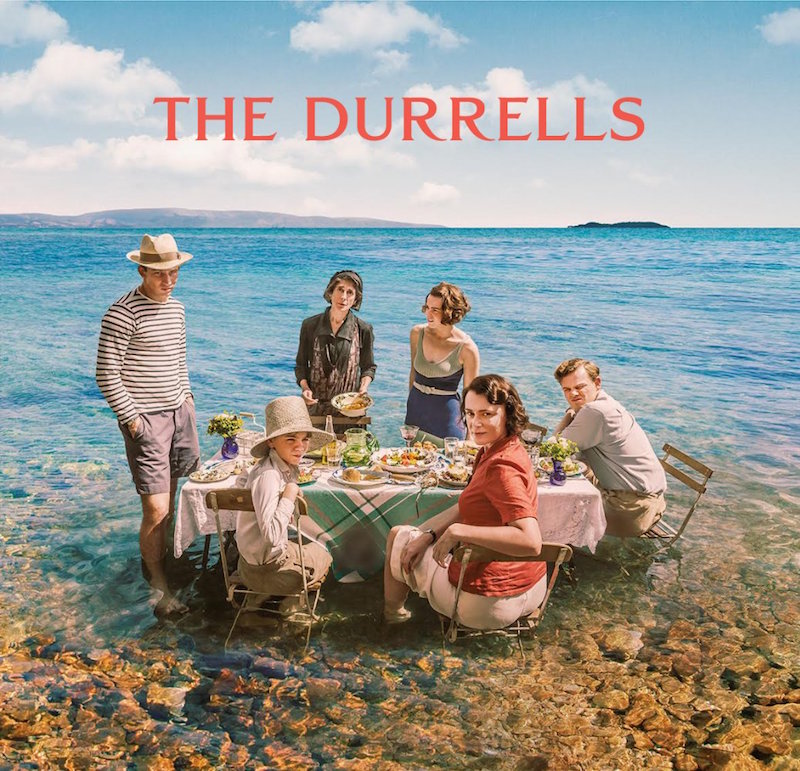
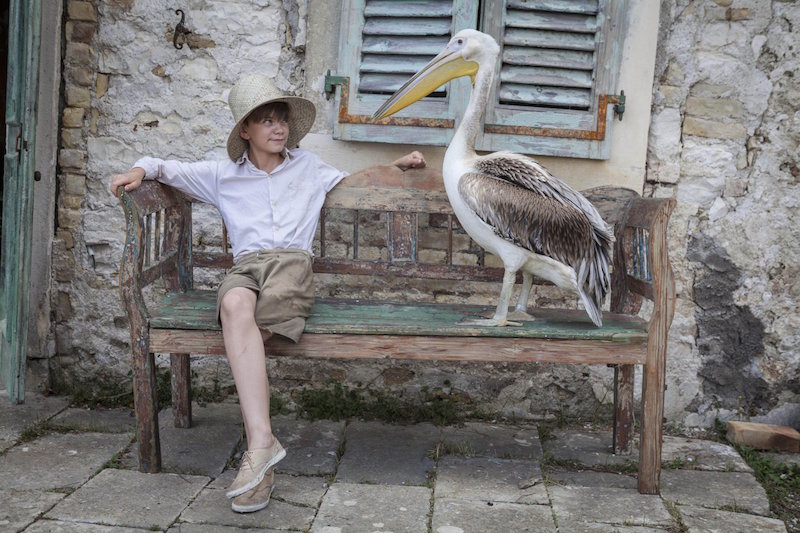
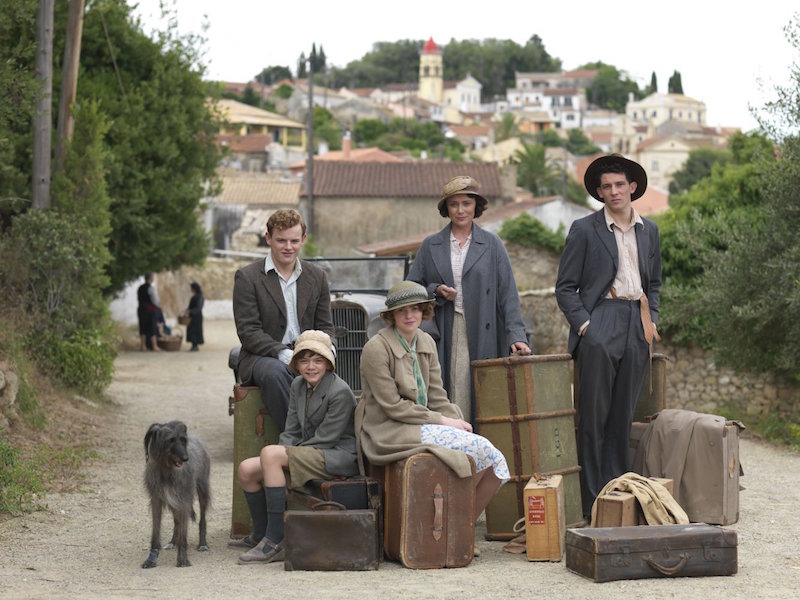
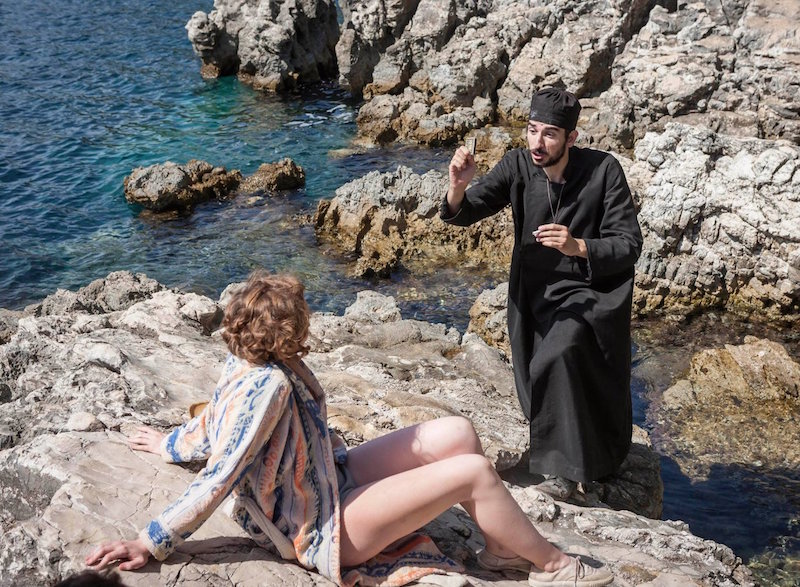
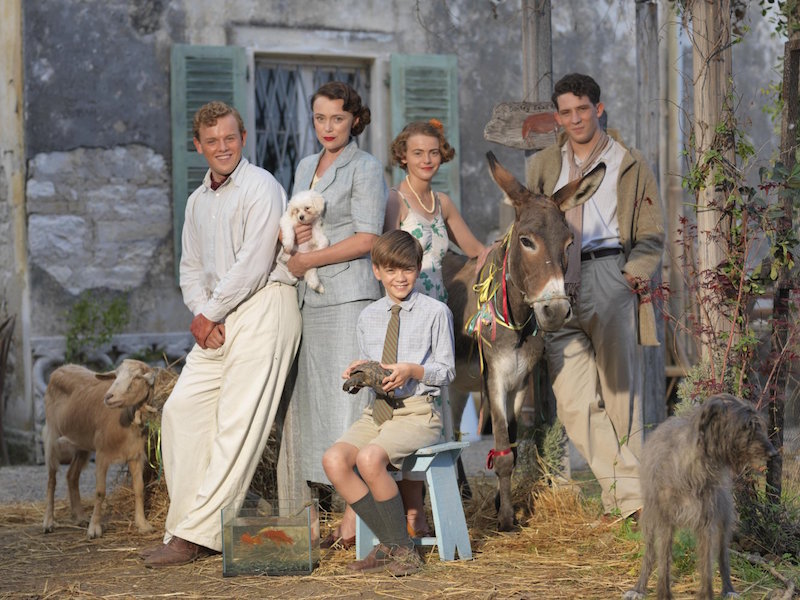
You can move away, you can run away even, but, 90 percent of the time, your quirks and fears and troubles stow away with you. I know this because I have moved a lot, and sometimes a long way.
This is the underlying theme of a new TV show called The Durrells. Thankfully, the quirks, fears and troubles that follow the Durrell family from Bournemouth in the UK to the Greek island of Corfu are also frequently adorable, affectionate, and genuinely funny.
Oh my gosh, I am so in love with this eccentric family of misfits and, in particular, with their mother Louisa, who is most often at her wits' end but is also my hero.
The series is inspired by the trilogy of books by Gerald Durrell. Remember My Family and Other Animals? My father gave me this book when I was a child, telling me how much he had loved it when he was a child. So now I can't think about the book without thinking about my father, which makes it doubly joyful to revisit the hapless Durrells in their warm and sunlit world.
In fact I never want to leave that world. A fruitless wish, since there are only six episodes to a season, but thankfully I hear a second season is already in the making.
And in the meantime, since summer is only just around the corner here in Australia, I am going to take a leaf out of the Durrells' book and eat lunch in the ocean, to keep cool. Tablecloth included. It looks kind of perfect, don't you think?
Come into the woods
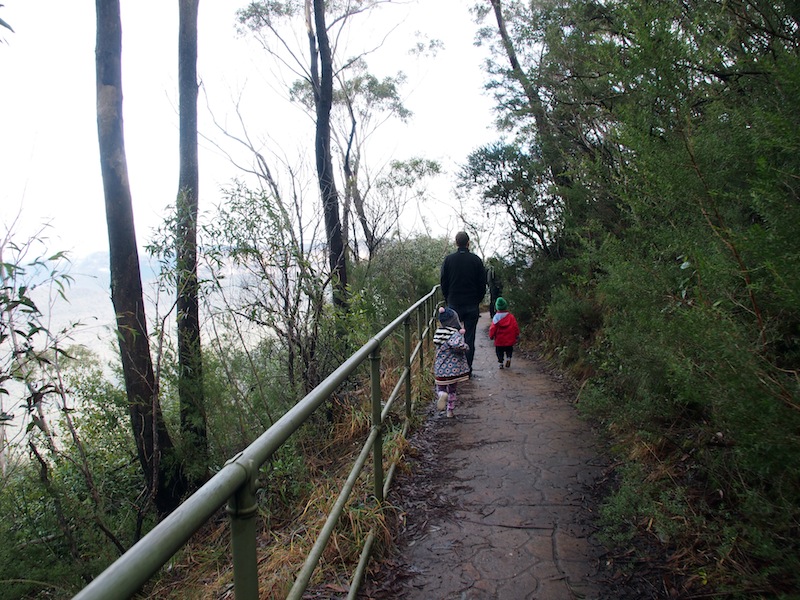
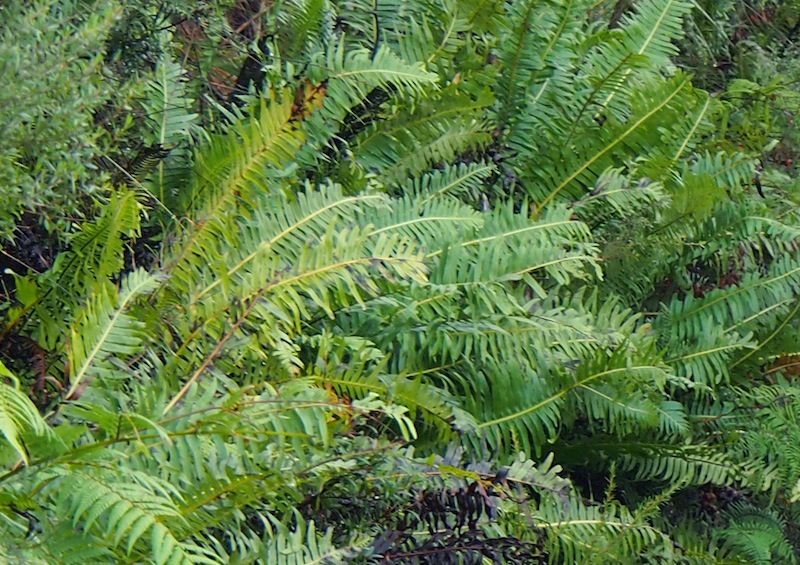

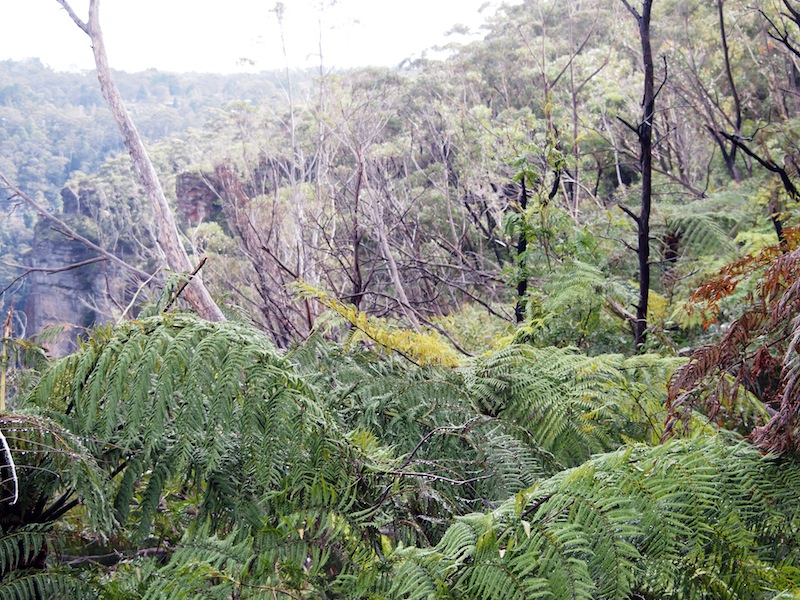
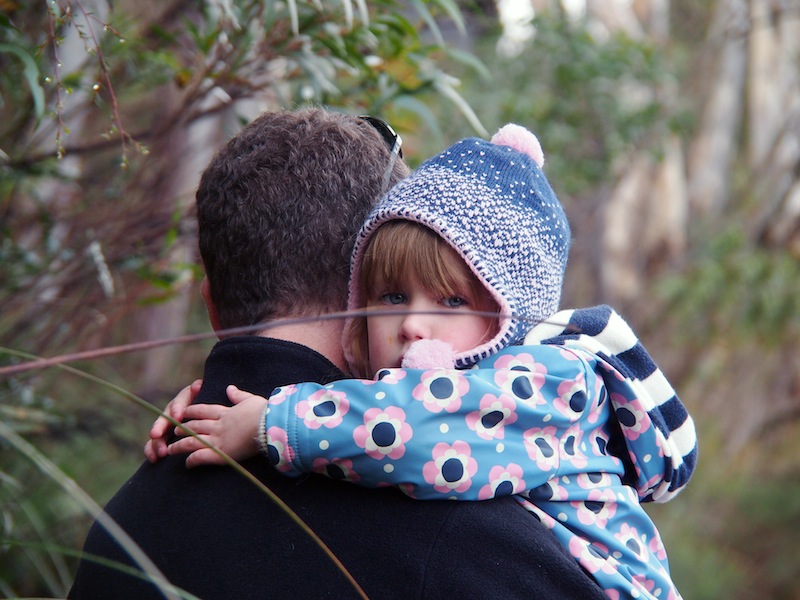
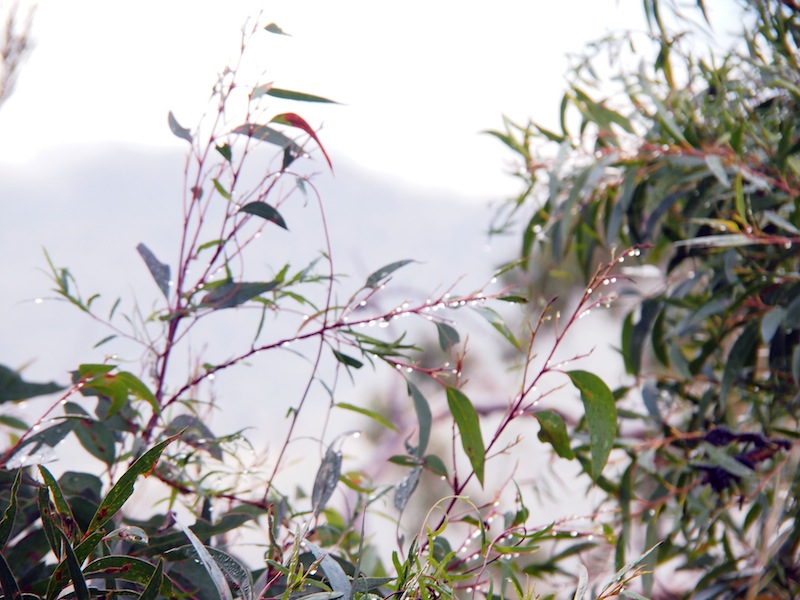
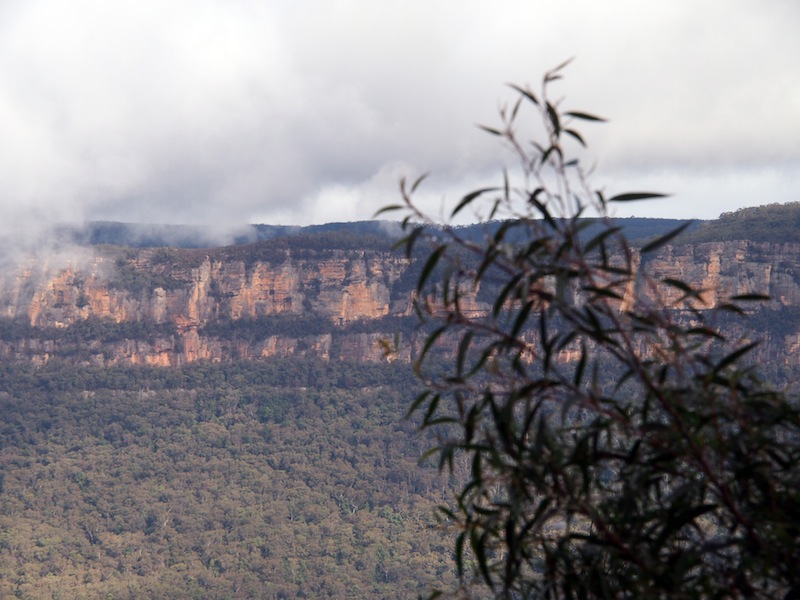

Come to the woods, for here is rest. There is no repose like that of the green deep woods. Sleep in forgetfulness of all ill. ― John Muir
You ask me why I dwell in the green mountain; I smile and make no reply for my heart is free of care. ― Li Bai
Road + dawn
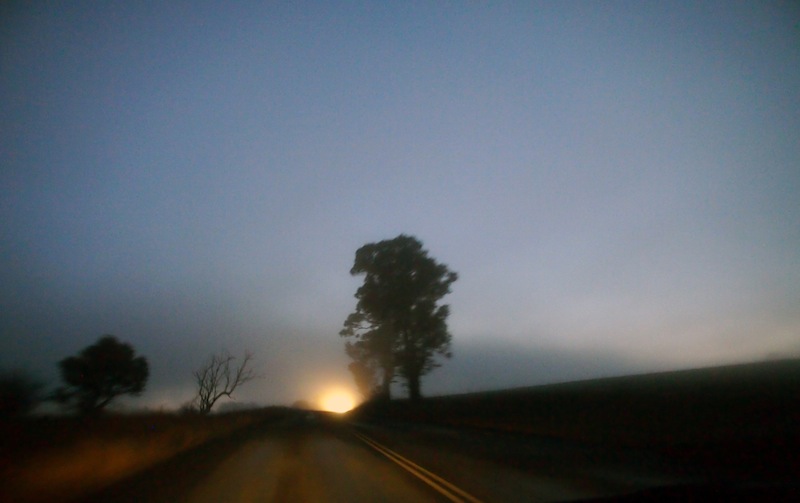
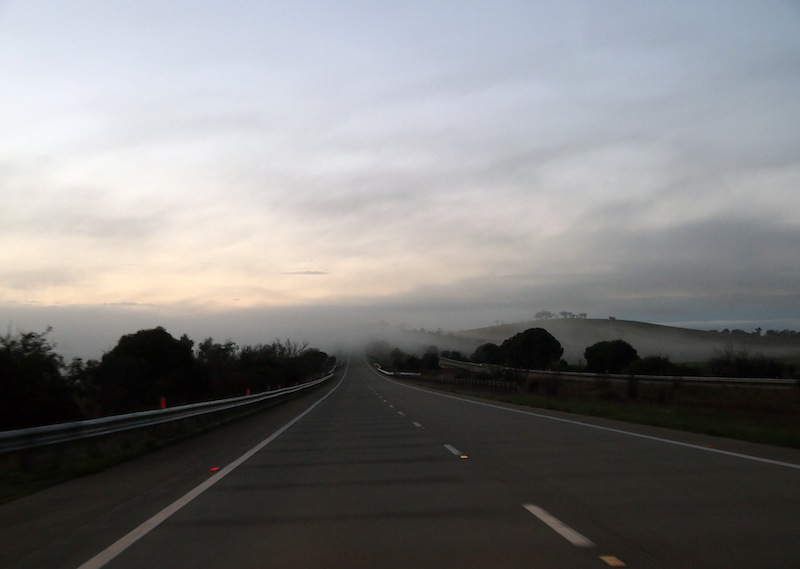
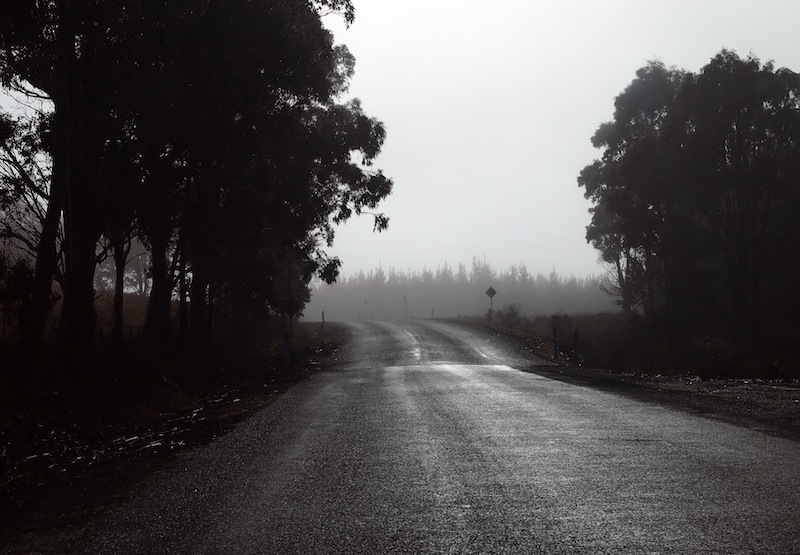
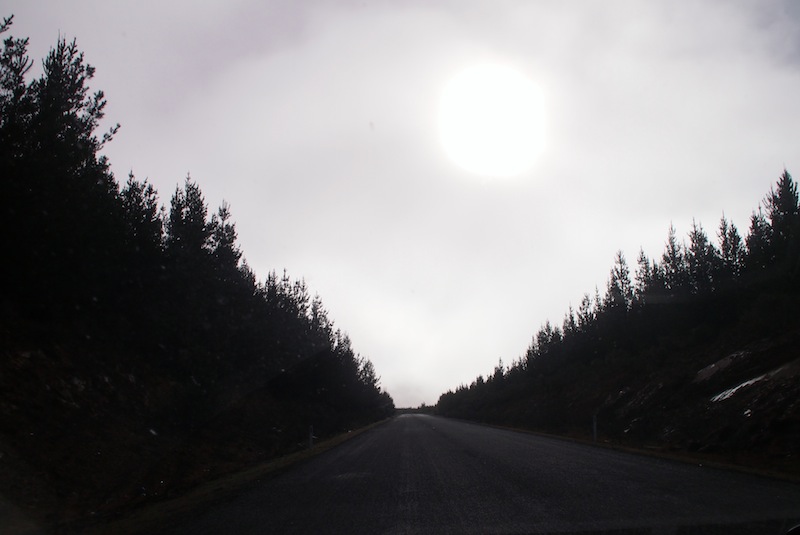
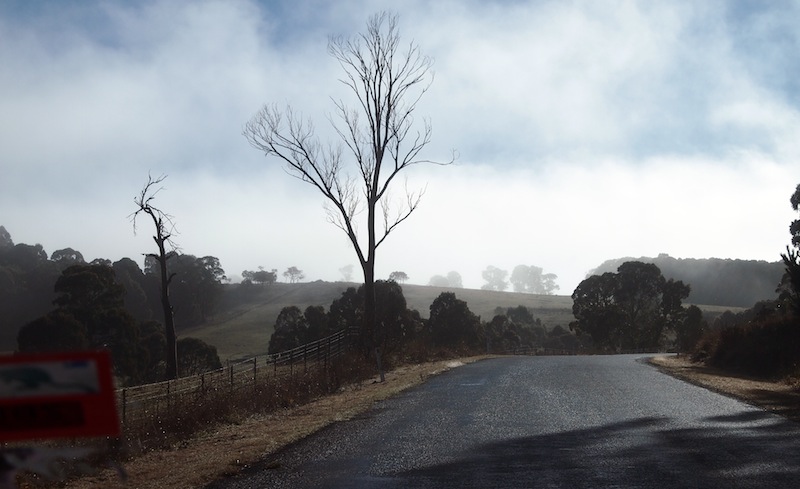
We left the keys to our motel room in a box outside the locked reception, and drove out into the dark. The kind of dark that holds its breath before the dawn. Cold air outside frosted the car windows and the children drew on the melting glass, painting the dark road, as it flashed past, with eerie swirls and scribbles.
In between dense pockets of fog, our headlights flashed over warning signs. CAUTION: SNOW AND BLACK ICE ON ROAD. Subconsciously we both leaned forward in our seats, squinting uselessly into the spotlit dark for unseen hazards as we hurtled forwards at 100 kilometres an hour.
By the time the sky began to brighten, ever so lightly, we were desperate for coffee, but there was nary a town in sight. The car rushed on through the mist. "We are driving inside clouds!" the children shouted for joy.
And then all at once, as if some unseen celestial homeowner had flipped a switch, the sun came up, and the day was glorious. Clouds floated skywards, and winter sun filtered through and over us like gold-dust. If angels had suddenly started singing opera out of sunbursts, it could not have been more magnificent a morning, and none of us would have been surprised.
Still we sped forward, now telling each other intermittently, "WHAT a morning!" and "What a beautiful dawn!"
We finally found coffee and Vegemite-on-toast about half an hour later, but all four of us were already caffeinated by the day.
Capturing the castle
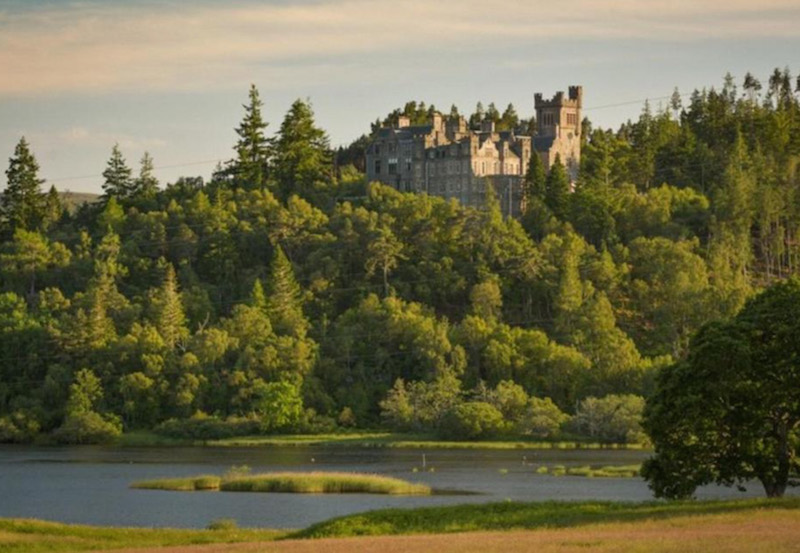
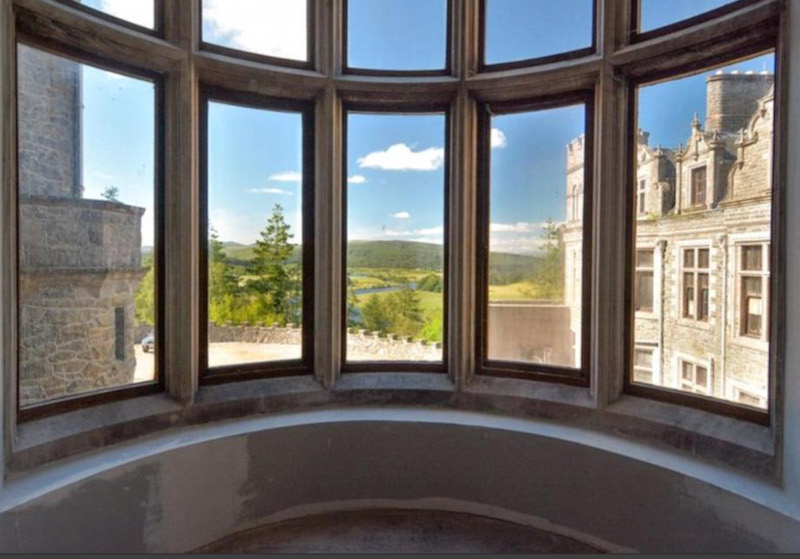
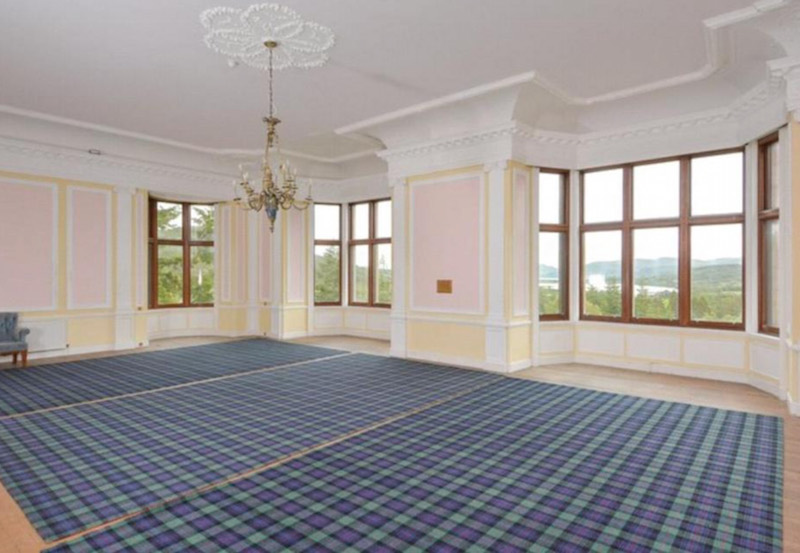

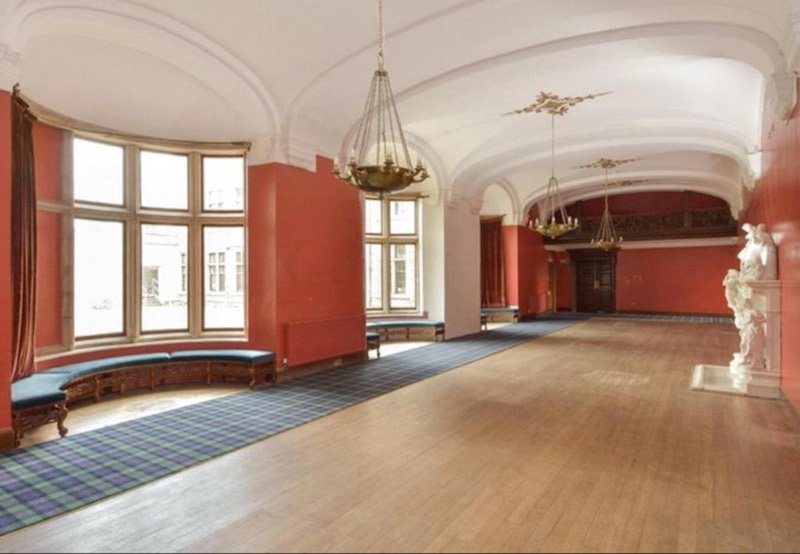
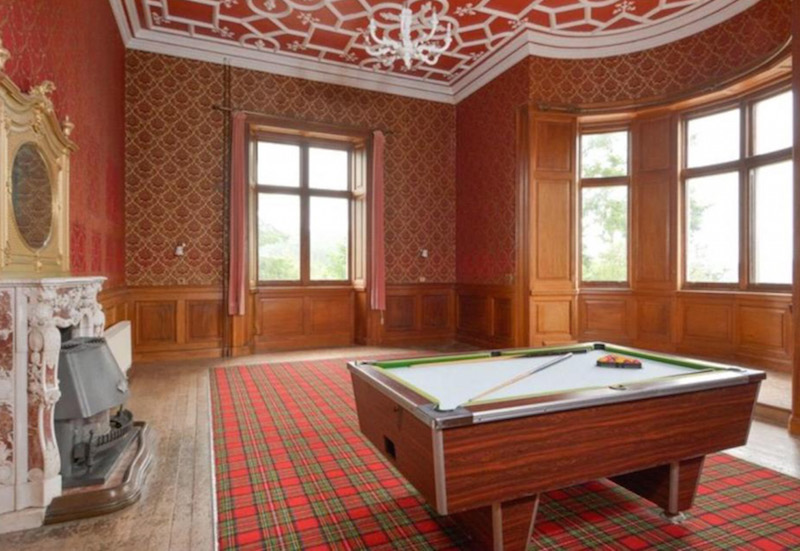
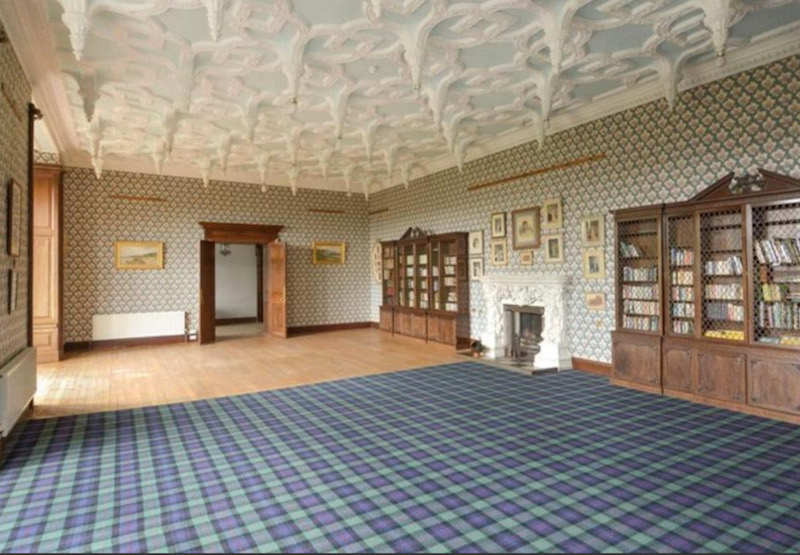
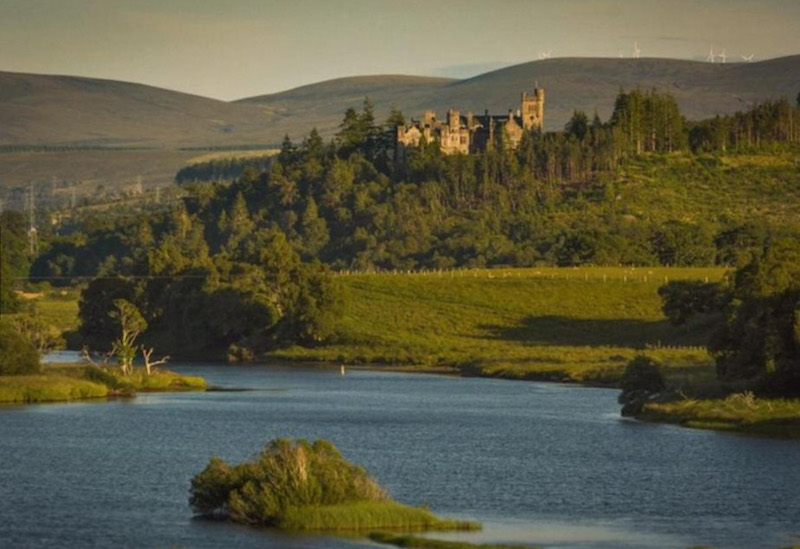
Carbisdale Castle north of Inverness in the Scottish Highlands is for sale for offers over 1.5 million (Australian) dollars. Three-bedroom houses sell for more than that where I live!
Shall we all pool our resources and buy it together? There will be plenty of room for all of us: the castle sits on 16 acres and has a ballroom, grand hall, minstrel's gallery, billiard room, dining room, drawing room, library, and 40 bedrooms.
It was used as a youth hostel for many decades and had some water damage during a particularly severe winter a couple of years back so it needs a bit of TLC, but we are not afraid of a little bit of hard work, are we?






